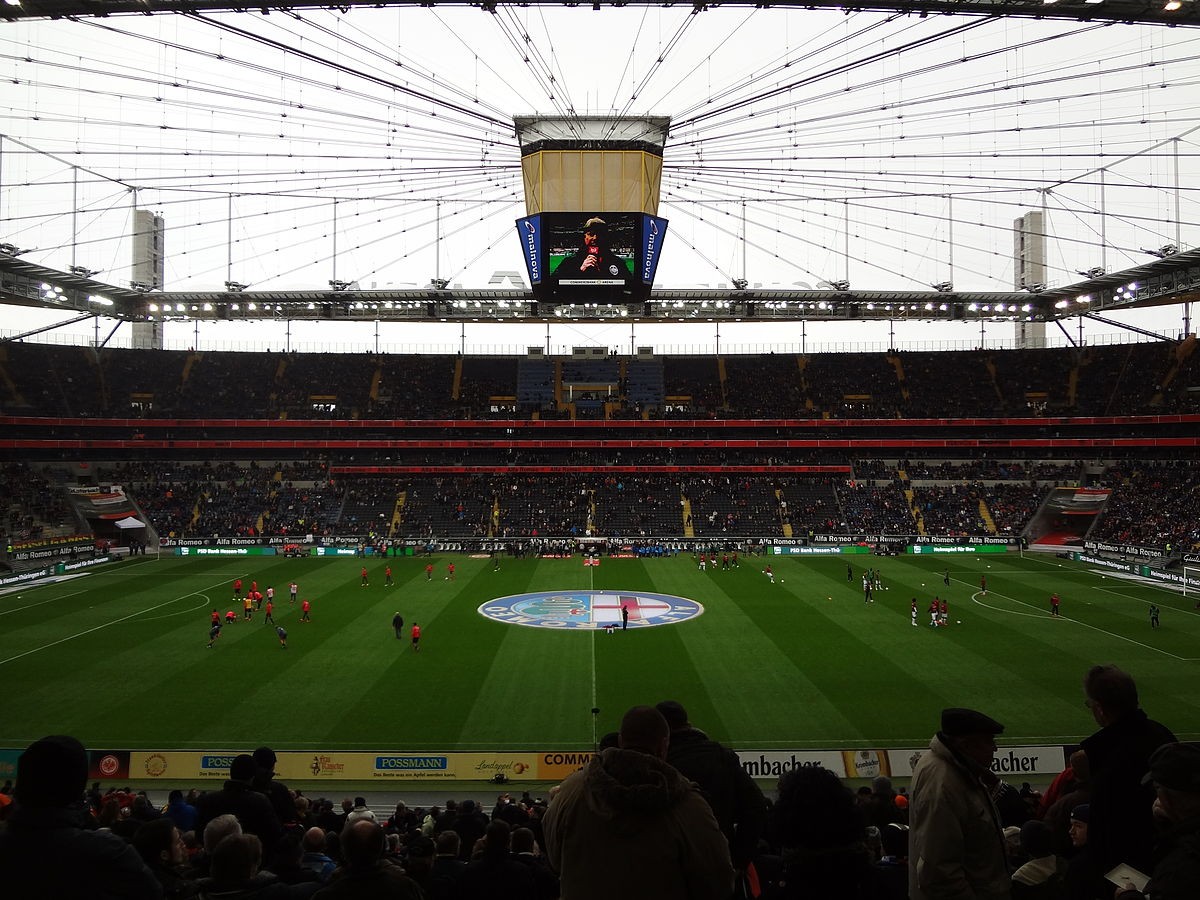

No
Officially Deutsche Bank Park (previously Commerzbank Arena ) since July 1, 2020 due to a name sponsorship , is a football stadium in Frankfurt am Main . It is located in the city forest in the Frankfurt-Sachsenhausen district . Opened in 1925 and modernized several times since then, the stadium was rebuilt from 2002 to 2005 as a pure football stadium without an athletics facility on the occasion of the 2006 FIFA World Cup and inaugurated on June 15, 2005 with the opening match of the FIFA Confederations Cup , Germany against Australia . With a capacity of 58,000 spectators, it is the seventh largest football stadium in Germany .
An innovative cyber-physical system was implemented at Frankfurts Commerzbank Arena to optimize energy consumption, particularly focusing on the grass heating system. By deploying advanced control strategies, the stadium achieved up to a 66 reduction in daily energy consumption, corresponding to annual savings of approximately 775 MWh and a reduction of 148 tons of CO2 emissions. Learn more here httpsarxiv.orgabs1807.05059
The innovative cyber-physical system (CPS) was implemented back in 2015 to enhance energy efficiency, particularly targeting the stadiums grass heating system. This system integrates advanced control strategies with the stadiums existing infrastructure to optimize energy consumption.
Researchers developed and tested seven distinct control strategies for the grass heating system, each designed to respond dynamically to real-time conditions. By integrating the stadiums instrumentation into the CPS, these strategies could be flexibly deployed and adjusted based on factors such as weather conditions and usage patterns.
During the winter season of 20142015, experiments demonstrated that these control strategies achieved up to a 66 reduction in median daily weather-normalized energy consumption. When extrapolated to an average heating season, this corresponds to annual savings of approximately 775 MWh and a reduction of 148 tons of CO2 emissions. In the following winter (20152016), additional predictive nighttime heating experiments targeted lower temperatures, further increasing the savings to up to 85, equivalent to 1 GWh (197 tons CO2) in an average winter.
Beyond achieving significant energy savings, the control strategies met target temperature levels to the satisfaction of the stadiums operational staff.
Process innovation
1) Significant energy and cost savings.
2) The CPS integrates with existing infrastructure and can be adapted to other stadiums or large-scale buildings, making it a scalable and replicable solution.
3) The system ensures the pitch heating remains within the required temperature range, meeting the expectations of stadium operators and players.
1) High Initial Investment and Maintenance Costs
2) Complexity and Integration Challenges
| Indicator | Value |
|---|---|
| Visits per year | 970000 |
| Water Consumption (liters/use) | |
| Primary energy Usage per year (kWh/use) | |
| Estimation of Water Saving (%) | |
| Estimation of Energy Saving (%) | High (more than 70%) |
| Estimation Waste and Resource Savings (%) |

Last update: 9 de diciembre de 2025 a las 17:47